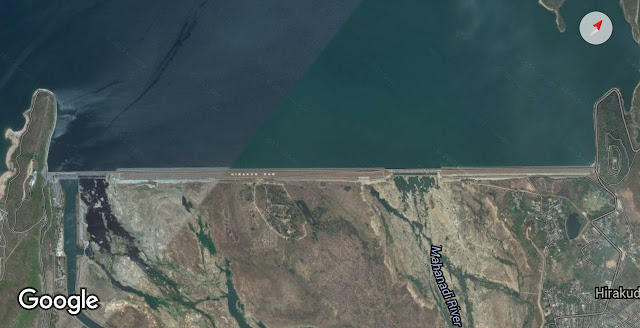The Mariana Trench or Marianas Trench[1] is the deepest part of the world's oceans. It is located in the western Pacific Ocean, to the east of the Mariana Islands. The trench is about 2,550 kilometres (1,580 mi) long with an average width of 69 kilometres (43 mi). It reaches a maximum-known depth of 10,994 m (± 40 m) or 6.831 mi (36,070 ± 131 ft) at a small slot-shaped valley in its floor known as the Challenger Deep, at its southern end,[2] although some unrepeated measurements place the deepest portion at 11,034 metres (36,201 ft).[3]
At the bottom of the trench the water column above exerts a pressure of 1,086 bars (15,750 psi) (over 1000 times the standard atmospheric pressure at sea level). At this pressure, the density of water is increased by 4.96%, making 95 litres of water under the pressure of the Challenger Deep contain the same mass as 100 litres at the surface. The temperature at the bottom is 1 to 4 °C.[4]
The trench is not the part of the seafloor closest to the center of the Earth. This is because the Earth is not a perfect sphere; its radius is about 25 kilometres (16 mi) less at the poles than at the equator.[5] As a result, parts of the Arctic Ocean seabed are at least 13 kilometres (8.1 mi) closer to the Earth's center than the Challenger Deep seafloor.
Xenophyophores have been found in the trench by Scripps Institution of Oceanography researchers at a record depth of 10.6 km (6.6 mi) below the sea surface.[6] On 17 March 2013, researchers reported data that suggested microbial life forms thrive within the trench.[7][8] The Mariana Trench is part of the Izu-Bonin-Mariana subduction system that forms the boundary between two tectonic plates. In this system, the western edge of one plate, the Pacific Plate, is subducted (i.e., thrust) beneath the smaller Mariana Plate that lies to the west. Crustal material at the western edge of the Pacific Plate is some of the oldest oceanic crust on earth (up to 170 million years old), and is therefore cooler and more dense; hence its great height difference relative to the higher-riding (and younger) Mariana Plate. The deepest area at the plate boundary is the Mariana Trench proper.
The movement of the Pacific and Mariana plates is also indirectly responsible for the formation of the Mariana Islands. These volcanic islands are caused by flux melting of the upper mantle due to release of water that is trapped in minerals of the subducted portion of the Pacific Plate.









